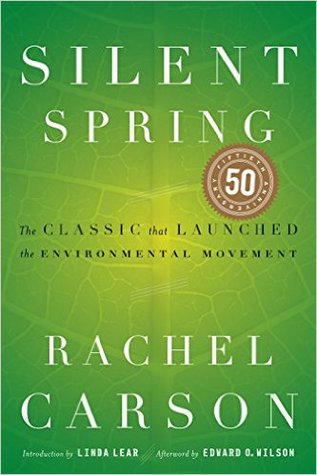More on this book
Community
Kindle Notes & Highlights
By the time she entered Pennsylvania College for Women (now Chatham College),
Scholarships allowed her to study
She categorically rejected the notion proposed by industry that there were human “thresholds” for such poisons, as well as its corollary, that the human body had “assimilative capacities” that rendered the poisons harmless.
The domestic production of DDT was banned, but not its export,
They should not be called “insecticides,” but “biocides.”
DDT (short for dichloro-diphenyl-trichloro-ethane)
The fatty storage depots act as biological magnifiers, so that an intake of as little as 1/10 of 1 part per million in the diet results in storage of about 10 to 15 parts per million, an increase of one hundredfold or more.
Chlordane,
Chlordane, or chlordan, is an organochlorine compound that was used as a pesticide. It is a white solid. In the United States, chlordane was used for termite-treatment of approximately 30 million homes until it was banned in 1988.[4] Chlordane was banned 10 years earlier for food crops like corn and citrus, and on lawns and domestic gardens.[5]
https://en.wikipedia.org/wiki/Chlordane
Chlordane makes use of all available portals to enter the body.
Heptachlor, one of the constituents of chlordane, is marketed as a separate formulation. It has a particularly high capacity for storage in fat.
The second major group of insecticides, the alkyl or organic phosphates, are among the most poisonous chemicals in the world.
It is not possible to add pesticides to water anywhere without threatening the purity of water everywhere.
Without soil, land plants as we know them could not grow,
What about hydroponics? Hydroponics is the technique of growing plants using a water-based nutrient solution rather than soil, and can include an aggregate substrate, or growing media, such as vermiculite, coconut coir, or perlite. Hydroponic production systems are used by small farmers, hobbyists, and commercial enterprises.
https://www.nal.usda.gov/farms-and-agricultural-production-systems/hydroponics
The Japanese beetle, an insect accidentally imported into the United States, was discovered in New Jersey in 1916, when a few shiny beetles of a metallic green color were seen in a nursery near Riverton.
Dutch elm disease entered the United States from Europe about 1930 in elm burl logs imported for the veneer industry. It is a fungus disease;


